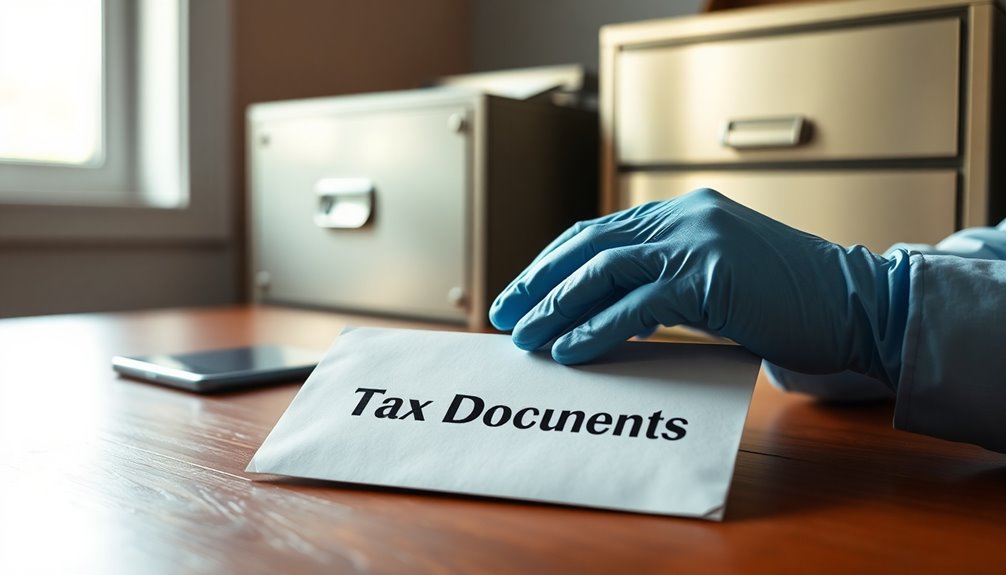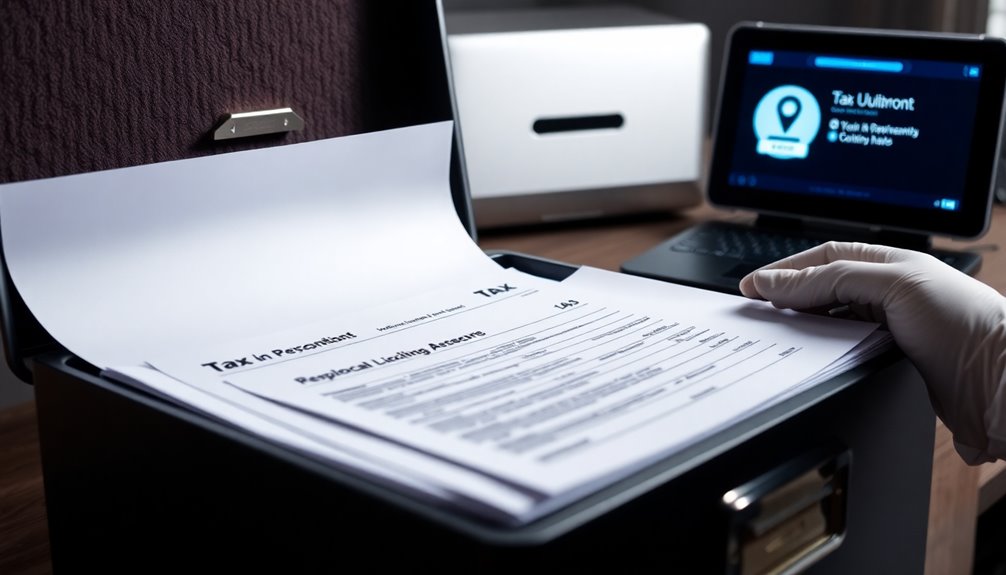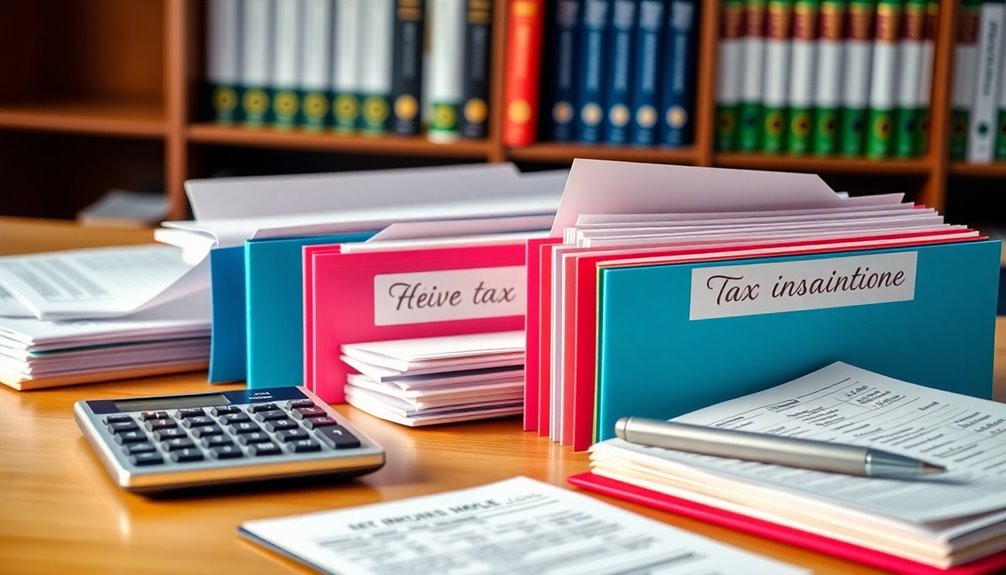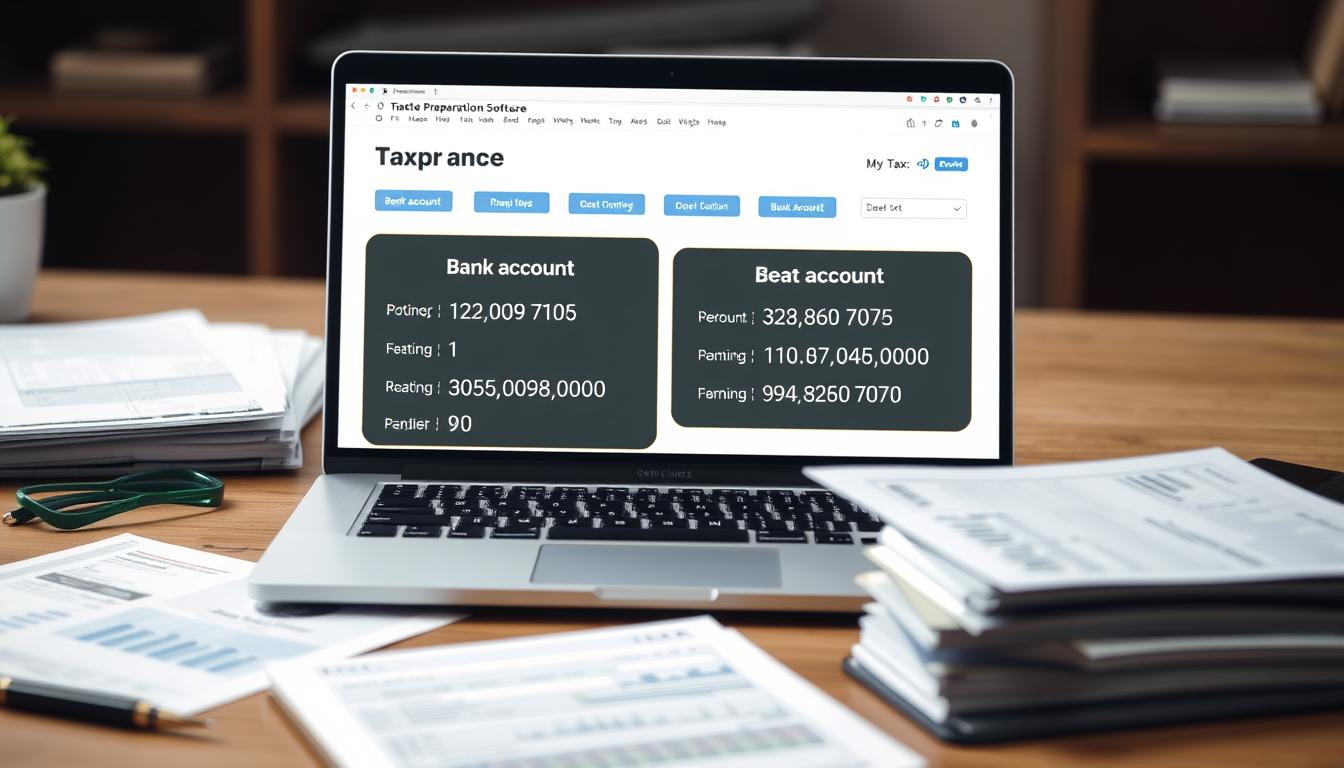To send tax documents securely, start by encrypting them. Use password protection for files and opt for encrypted email services. Choose reputable file-sharing platforms with SSL and AES 256-bit encryption. Enable multi-factor authentication to add an extra layer of security. When communicating via email, double-check the recipient's address and stay alert for phishing scams. For physical documents, consider using certified mail and tamper-proof envelopes. Always keep your sensitive information in a secure place until it's ready to be sent. By following these steps, you can safeguard your tax documents effectively and learn about more options available.
Key Takeaways
- Use encrypted email for secure communication, utilizing public/private keys to protect sensitive tax documents.
- Opt for reputable file-sharing platforms with SSL and AES 256-bit encryption for safe document transfer.
- Employ multi-factor authentication (MFA) on all accounts to enhance security during document sharing.
- Send physical copies via certified mail with a delivery receipt and use tamper-proof envelopes to ensure safety.
- Regularly update passwords and use a password manager for secure storage and management of sensitive information.
Encrypting Your Tax Documents

When it comes to securing your tax documents, encryption acts as a digital lock that keeps your sensitive information safe. You can start by using encrypted email, which transforms readable text into an indecipherable format through Public Key Infrastructure (PKI). This process requires a public key for encryption and a private key for decryption, ensuring only you and the intended recipient can access the content. Most email providers, like Gmail and Outlook, offer this feature. Additionally, encrypting files and attachments before sending them adds another layer of security. By using password-protected documents, you can ensure that even if an email is intercepted, unauthorized individuals can't access the information without the password. Modern operating systems often have built-in encryption tools, or you can opt for third-party software. If you're transferring physical copies, consider using encrypted storage devices like flash drives. This method prevents unauthorized access, even if the package is lost. Furthermore, utilizing secure transmission methods is critical for protecting sensitive tax information from identity theft and fraud.
Choosing Secure File-Sharing Platforms

Choosing a secure file-sharing platform is crucial for protecting your sensitive tax documents. You should always use reputable services like Dropbox, Google Drive, or ShareFile, which are well-known for their security measures. Alternatively, consider specialized tax software such as TaxDome that's tailored for handling tax documents securely.
Look for platforms that utilize automatic syncing and allow access from any device. Ensure the service employs SSL encryption for file transfers and storage, providing peace of mind that your data is secure both in transit and at rest. Opt for platforms with AES 256-bit encryption, as this offers robust protection against unauthorized access. Moreover, keep in mind that 1,321 data compromises reported in 2023 highlight the importance of security in document sharing.
Multi-factor authentication (2FA) is another critical feature. Requiring 2FA, such as SMS codes or mobile app verifications, adds an extra layer of security to your account. Make sure to use strong, unique passwords and verify recipient contact information to avoid misdirecting documents.
Lastly, choose platforms with user-friendly interfaces that allow clients to easily upload files. The right platform will help you manage documents efficiently while ensuring that sensitive information remains protected throughout the sharing process.
Ensuring Email and Communication Security

Ensuring secure email communication is essential for protecting your sensitive tax documents. Start by using email encryption to safeguard your messages. Implement Public Key Infrastructure (PKI) to encrypt emails, ensuring only the intended recipient can decrypt them. Use reputable email encryption software and confirm that your email service provider, like Gmail or Outlook, has secure options enabled.
Next, enable multi-factor authentication (MFA) on your email accounts. This adds an extra layer of security, using methods like SMS codes or authenticator apps. Apply MFA to all accounts involved in sending or receiving tax documents, and regularly update your MFA settings to maintain effectiveness.
Be vigilant against phishing scams. Always check for suspicious sender addresses, odd URLs, or requests for sensitive information. If something seems off, verify the contact directly using an official number instead of replying to the email. Remember that cybercriminals target sensitive information, making it crucial to stay alert.
Finally, maintain best practices for email communication. Double-check email addresses to avoid sending documents to the wrong recipient. Use strong passwords for your accounts and keep your email organized to enhance clarity.
Following these steps helps ensure your tax documents stay secure throughout the communication process.
Safeguarding Physical Document Delivery

Safeguarding your physical document delivery is crucial for protecting sensitive tax information. To ensure your documents reach their destination securely, consider using certified mail with delivery receipt requested. This method provides proof of mailing and receipt, giving you peace of mind. Services like FedEx also offer delivery confirmations, adding another layer of security. Additionally, encrypted flash drives can be a reliable alternative for sending large amounts of sensitive data securely if you decide against mailing.
Before sending, keep your original documents safe and send only copies to your tax preparer. Use tamper-proof envelopes to prevent unauthorized access. It's also wise to maintain copies or scanned originals of all mailed documents for your records.
If you prefer hand delivery, take the documents directly to the recipient or tax agency office. Set up an appointment to ensure the preparer can scan and return the documents immediately. Keep the documents concealed until delivery and obtain confirmation receipts for your records.
Lastly, store all physical documents in a secure, locked location before mailing or hand delivery. Remove any old drafts or duplicates to avoid confusion.
Implementing Password Best Practices

Implementing strong password practices is essential for protecting sensitive tax information. Start by creating long passphrases that are easy for you to remember but tough for hackers to crack—aim for up to 64 characters, including spaces. Ensure your passwords mix uppercase and lowercase letters, numbers, and special characters, though strict complexity isn't mandatory. Avoid dictionary words or easily guessable info like birthdays.
Use a password manager to generate and securely store unique passwords for each account. This prevents a breach in one account from compromising others. Implement multi-factor authentication (MFA) for an additional security layer. Options like SMS codes, biometrics, or security keys can significantly enhance your protection. Additionally, password managers can help users maintain unique credentials across various platforms, reducing the overall risk of breaches.
When it comes to storing and transmitting passwords, apply end-to-end encryption that's non-reversible. Never store passwords in clear text. Regularly update your passwords, especially after any suspicious activity or data breaches.
Lastly, evaluate your password strength with online tools to ensure they meet security standards. By following these practices, you can significantly reduce the risk of unauthorized access to your sensitive tax documents.
Frequently Asked Questions
What Should I Do if I Suspect a Data Breach?
If you suspect a data breach, act quickly.
Monitor your accounts for unusual activity and check for any unauthorized changes.
Contact your financial institutions and relevant agencies to verify the breach.
Change your passwords and enable multi-factor authentication to enhance security.
Notify affected parties and keep detailed records of the incident.
Report the breach to authorities like the IRS and FTC, and ensure you take all necessary steps to protect your information.
Are There Specific Regulations for Handling Tax Documents?
Yes, there are specific regulations for handling tax documents. You need to retain them for at least three years from the filing date or due date.
If there's underreported income, the retention period may extend to six years.
Tax preparers must keep a completed copy of returns, and failure to retain records can lead to penalties.
Organizing and securely storing your documents ensures compliance and protects you from potential audits or penalties.
How Often Should I Update My Encryption Methods?
You should update your encryption methods whenever new vulnerabilities are discovered or when algorithms become deprecated.
Regular audits, at least annually or bi-annually, help you identify necessary updates.
Key rotation policies should involve frequent changes to maintain security.
Always ensure your encryption methods align with the latest standards and protocols, especially during major system upgrades.
This proactive approach helps you prevent data breaches and maintain trust with clients and stakeholders.
Can I Use Free Encryption Software for Tax Documents?
Yes, you can use free encryption software for your tax documents.
It utilizes advanced AES encryption to protect your sensitive data, ensuring only authorized parties can access it.
With a user-friendly interface, you can easily drag and drop files for encryption.
Plus, the software operates locally, meaning you don't need an internet connection.
Just make sure the encryption method complies with applicable regulations, like GDPR or HIPAA, for added peace of mind.
What Are the Penalties for Mishandling Tax Information?
If you mishandle tax information, you could face serious penalties.
These include hefty fines—up to $250,000—and the possibility of imprisonment for unauthorized disclosure.
Tax fraud can lead to criminal charges, costing you up to five years in prison and significant financial penalties.
Beyond legal consequences, your reputation may suffer, impacting your credibility and future opportunities.
Always handle tax information with care to avoid these severe repercussions.
Conclusion
In conclusion, securing your tax documents is crucial for protecting your sensitive information. By encrypting files, using trusted file-sharing platforms, and ensuring secure communication, you can minimize risks. Don't forget to safeguard physical deliveries and implement strong password practices. Taking these steps not only keeps your data safe but also gives you peace of mind during tax season. Stay proactive about security, and you'll navigate the process with confidence.









